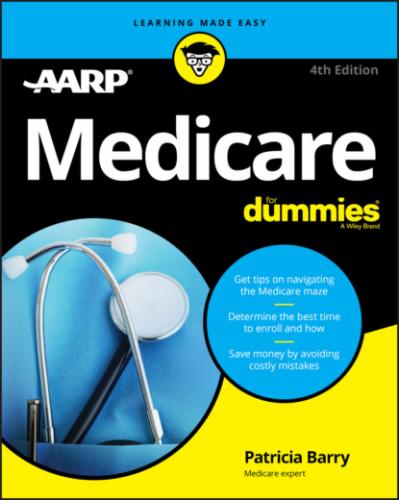www.medicare.gov/find-a-plan/questions/home.aspx) with small logos: D for dental, V for vision, and H for hearing. See Chapter 11 for info on using the plan finder to compare details of Medicare Advantage plans.
Of course, as always in Medicare, some exceptions exist. You can get coverage for foot care in certain circumstances — for example, if you have foot problems caused by conditions such as diabetes, cancer, multiple sclerosis, chronic kidney disease, malnutrition, or inflammation of the veins related to blood clots — especially if the act of toenail clipping would be hazardous to your health unless done by a professional. But the bottom line is that to get Medicare coverage for foot care, you need your doctor or podiatrist to provide evidence that said care is medically necessary.
Home safety items
Medicare spends billions of dollars a year on treating the results of falls, and older Americans are five times more likely to end up in the hospital for falls than for any other injuries. So you’d think that Medicare would try to save at least some of those billions by covering safety items that help prevent people from falling. But no, it doesn’t.
To be sure, Medicare covers a few items it deems medically reasonable if prescribed by a doctor — for example, seat lifts that help incapacitated people sit down or get up from a chair, or trapeze bars that help people sit up or alter positions when confined to bed. But Medicare doesn’t pay for equipment it considers items of convenience rather than of medical necessity. A long list of non-covered items includes stair lifts or elevators, bathtub lifts or seats, grab bars, room heaters, air conditioners, humidifiers, posture chairs, massage devices, physical fitness equipment, and medical emergency alert systems.
If you’re a veteran with disabilities, be aware that the Department of Veterans Affairs has little-known programs that provide cash grants to help eligible vets make safety improvements in their homes. Call the VA at 877-827-3702, email [email protected], or go to www.benefits.va.gov/homeloans/adaptedhousing.asp.
If your income is limited, contact the nonprofit organization Rebuilding Together, which provides volunteers to make housing repairs and install safety equipment free of charge. Call 800-473-4229 or go to http://rebuildingtogether.org for local information.
If you file itemized tax returns, you may be able to deduct the costs of home improvements for medical reasons, as I indicate in Chapter 4.
Nursing home care
Many people are surprised, and often alarmed, to discover that Medicare doesn’t cover long-term care in nursing homes. I’m not talking here about short-term stays in a skilled nursing facility (most of which are nursing homes) after leaving the hospital; Medicare does cover those stays in specific circumstances. (I describe this kind of skilled nursing care earlier in this chapter and explain the ins and outs of qualifying for it in Chapter 14.)
But what if you become too sick or incapacitated to live at home and need the constant long-term care that a nursing home provides? Medicare will continue to cover your medical needs, but it won’t pay for what it calls custodial care, which refers to help with the activities of daily life such as using the bathroom, dressing, and so on. Nor will Medicare pay for your room and meals in a nursing home. These same rules apply to assisted living facilities.
Most people living in nursing homes pay for their custodial care out-of-pocket — with the help of long-term-care insurance, if they’ve purchased it — until their resources run dry. At that point, they usually become eligible for Medicaid, the state-run health-care system for people with very limited incomes and resources, which does pay the custodial care bills of people who qualify. (Because of the similarity in names, many people confuse Medicare and Medicaid, especially when it comes to thinking about long-term care.)
Eligibility rules for Medicaid vary from state to state. (And the name of the program is different in some states — for example, MediCal in California, MassHealth in Massachusetts, and TennCare in Tennessee.) To find out how the rules apply to you or a family member, you may need to consult an informed counselor or a qualified elder care attorney.
www.medicare.gov/Pubs/pdf/02174-Nursing-Home-Other-Long-Term-Services.pdf. You can also visit www.medicare.gov/nursinghomecompare/search.html.
Medical services abroad
Medicare doesn’t pay for medical services outside of the United States and its territories except in these extremely rare circumstances:
You’re traveling between Alaska and another state and have a medical emergency that means you must be treated in Canada.
A medical emergency occurs while you’re in the United States or its territories, but the nearest hospital is in a foreign country — for example, across the border in Canada or Mexico.
You live within the United States or its territories and need hospital care (regardless of whether it’s an emergency), but your nearest hospital is in a foreign country.
Some Medigap supplemental insurance policies (those labeled C, D, F, G, M, or N) cover emergency or urgently needed treatment abroad. (I explain Medigap insurance in Chapter 4.) In this situation, you pay a $250 deductible and 20 percent of the cost of the medical services you use up to a lifetime maximum of $50,000. Some Medicare Advantage plans also cover emergencies abroad, and so do some employer benefits and TRICARE military benefits. But otherwise, you need to buy travel insurance that includes medical emergencies when planning journeys abroad.
www.aaro.org), which has long lobbied Congress to make Medicare available abroad. AARO offers its members access to a variety of private health insurance plans that can be used in many countries. (You may be able to enroll in Medicare while living abroad, however; turn to Chapter 6 for important information about this kind of enrollment.)
Services that may be nice but aren’t necessary
You probably aren’t surprised to know that you can’t get a face-lift or a tummy tuck at taxpayers’ expense. Surgery solely
